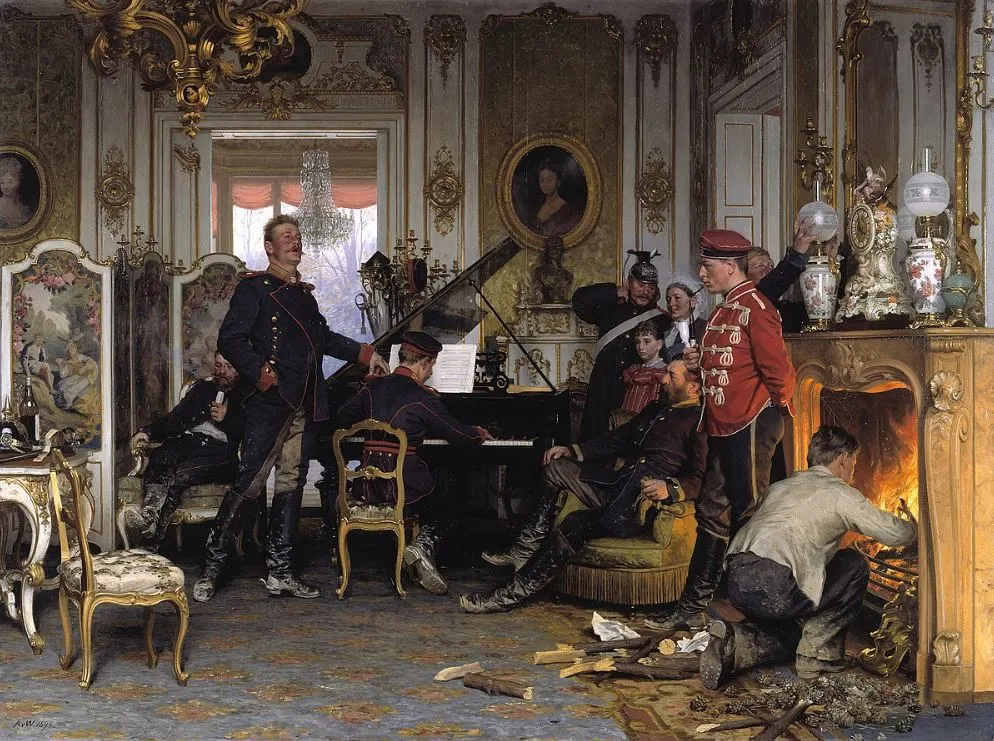If you enjoy visiting museums and plan to go to Berlin, then Museum Island should definitely be on top of your bucket list.
The northern section of the large Spree Island in the historic heart of the Geman capital is home to some of the country’s most exciting museums.
It took about a century before all buildings were completed between 1830 and 1930 and one of the most notable is the Alte Nationalgalerie or “Old National Gallery.”
This beautiful Neoclassical building was commissioned by King Frederick William IV of Prussia and constructed between 1862 and 1876.
A memorial commemorating the Prussian king is located just outside this UNESCO World Heritage site-listed building.
The most important works in the museum’s collection are paintings and sculptures from the 19th century and include some amazing masterpieces.
In this article, you’ll discover some of the most famous artworks at the Alte Nationalgalerie in Berlin.
1. The Monk by the Sea – Caspar David Friedrich
- Date created: 1808-1810
- Dimensions: 110 × 171.5 centimeters (43 × 67.5 inches)
The Monk by the Sea is the title of a painting by Caspar David Friedrich (1774-1840), the leading Romantic artist in Germany in the early 19th century. It depicts a hazy view of the vast sea with a small figure who appears to be a monk standing in front of it with his back facing the viewer.
This is a typical Romantic painting that features a landscape with a person in contemplation. It makes us think about the vastness of the universe and this is especially highlighted by the very small monk compared to the immense ocean in front of him.

2. The Thinker – Auguste Rodin
- Date created: 1903
- Dimensions: 185 centimeters (73 inches)

The Thinker is the title of the most famous sculpture by Auguste Rodin (1840-1917), a man who is often credited as being the founding father of modern sculpture. He produced several versions of this work of which a bronze version is on display at the Alte Nationalgalerie.
The sculpture of a man in deep contemplation was originally part of Rodin’s most ambiguous project called “The Gates of Hell.” This immense gate was inspired by Dante Alighieri’s 14th-century Divine Comedy. Today, dozens of castings of The Thinker are displayed in museums and public spaces around the world.
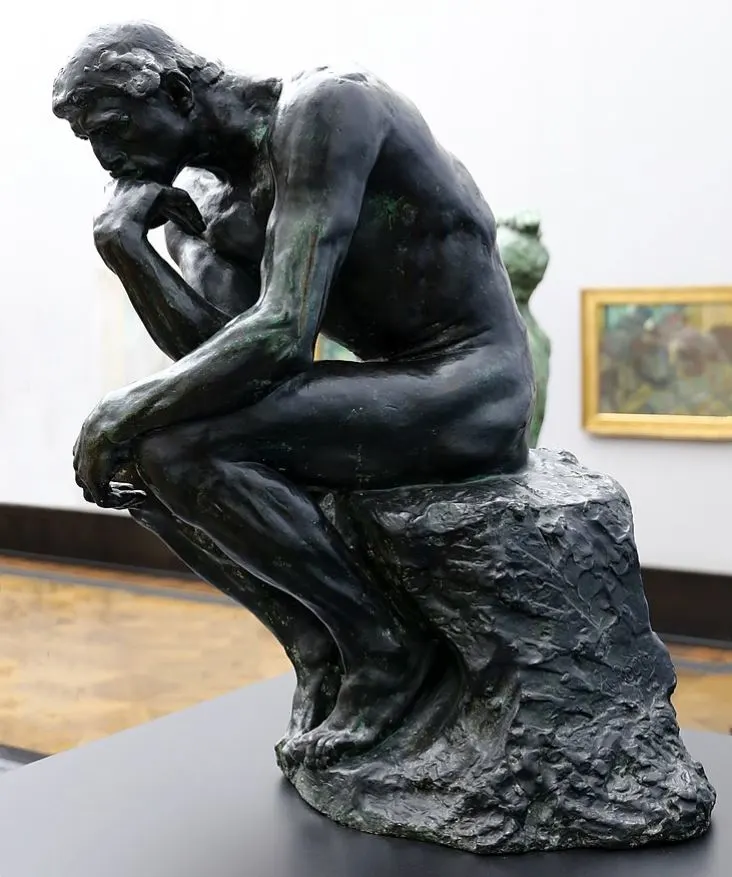
3. The Iron Rolling Mill – Adolph von Menzel
- Date created: 1872-1875
- Dimensions: 158 × 254 centimeters (62 × 100 inches)
The Iron Rolling Mill is a large work of art by German artist Adolph von Menzel (1815-1905), the leading Realism artist in Germany in the 19th century. The painting has an alternative title, “Modern Cyclopes,” which explains the painting’s context.
Menzel produced several works that depict the contemporary struggle of the Industrial Revolution, and this is definitely one of his most striking ones. The work depicts the interior of the Oberschlesische Königshütte, a rolling mill that produced railroad tracks, and was quite controversial when it was first exhibited.
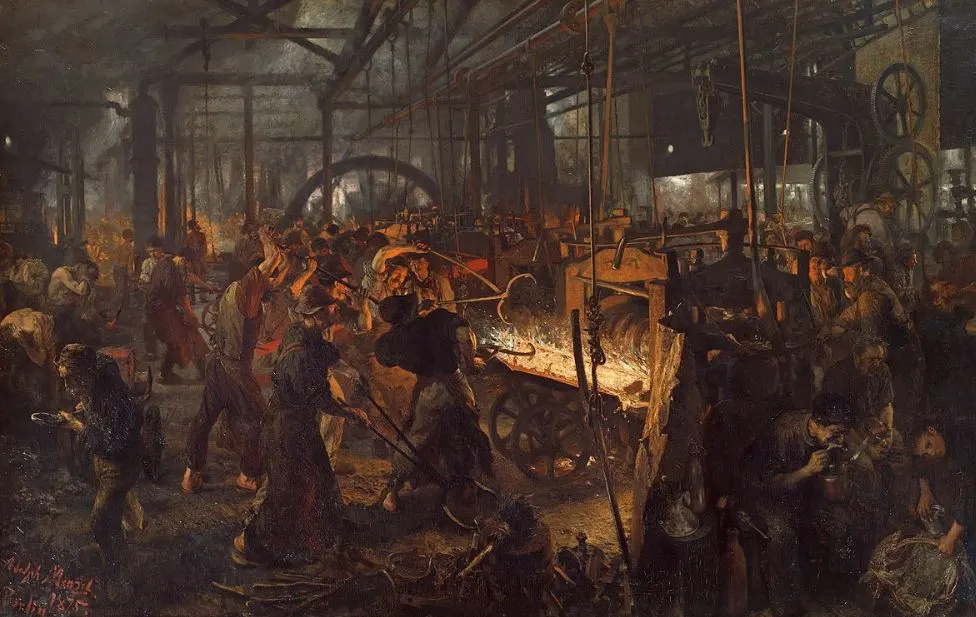
4. In the Conservatory – Édouard Manet
- Date created: 1879
- Dimensions: 115 × 150 centimeters (45.3 × 59.1 inches)
In the Conservatory is a painting by Édouard Manet (1832-1883), one of the most influential French artists of the 19th century. It was painted while he set up his studio in a conservatory owned by one of his friends at 70 Rue d’Amsterdam in Paris in the late 1870s.
It’s clear that the artist depicted a secluded meeting between a couple. The cold stare of the woman and the fact that the man stands behind the bench provides a rather confusing atmosphere. Art historians still don’t know the context in which this meeting took place, but from the looks of it, it wasn’t a very enjoyable one.
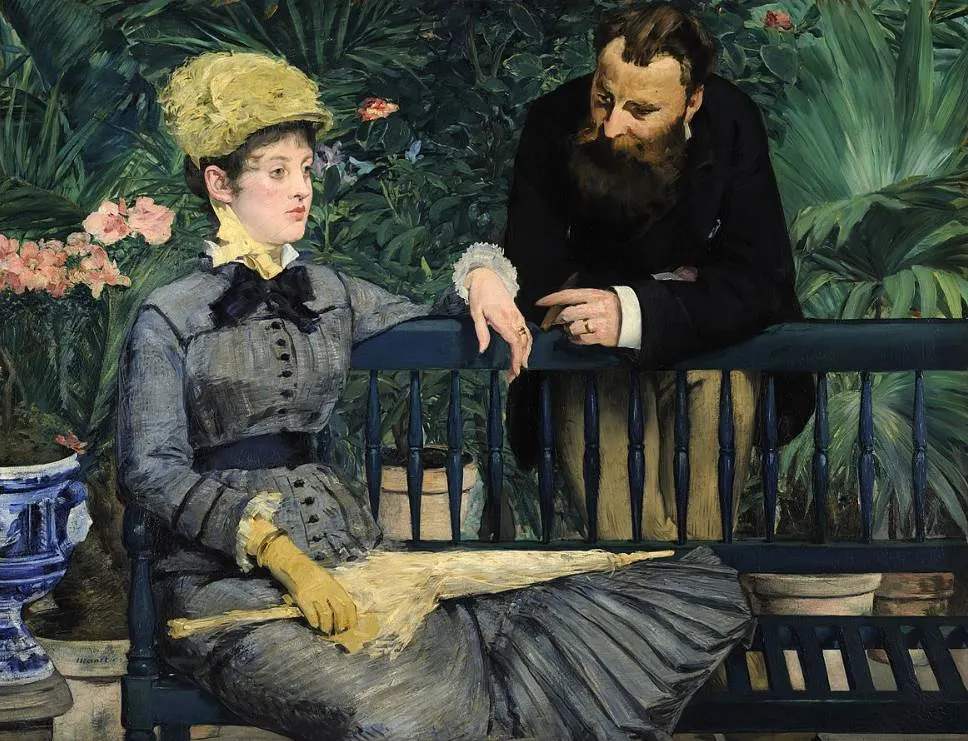
5. Princesses Monument – Johann Gottfried Schadow
- Date created: 1795-1797
- Dimensions: Life-sized
The Princesses Monument or the “Prinzessinnengruppe” is a beautiful sculpture by German artist Johann Gottfried Schadow (1764-1850). It depicts the sisters Louise and Frederica who were princesses of Prussia in the late 18th century.
Shadow first produced a plaster cast of the life-sized sculptural groups and later also completed a marble version. The sculpture was commissioned by crown prince Frederick William III who married Princess Louise of Mecklenburg-Strelitz in the Berlin Palace in 1793. The reason? He was so charmed with his daughters-in-law who were 15 and 17 years old at the time.

6. In Summer – Pierre-Auguste Renoir
- Date created: 1868
- Dimensions: 85 x 59 centimeters (33 x 23 inches)
In Summer is the title of a painting by Pierre-Auguste Renoir (1841-1919), one of the most influential Impressionist artists of his generation. It was painted in the late 1860s, a time when the Impressionist art movement was still developing.
This half-length portrait depicts Lise Tréhot (1848-1922) at age 20, a French art model who frequently posed for Renoir in the late 1860s and early 1870s. Its believed that the painting was inspired by one of Delacroix’s masterpieces titled Orphan Girl at the Cemetery (1823).
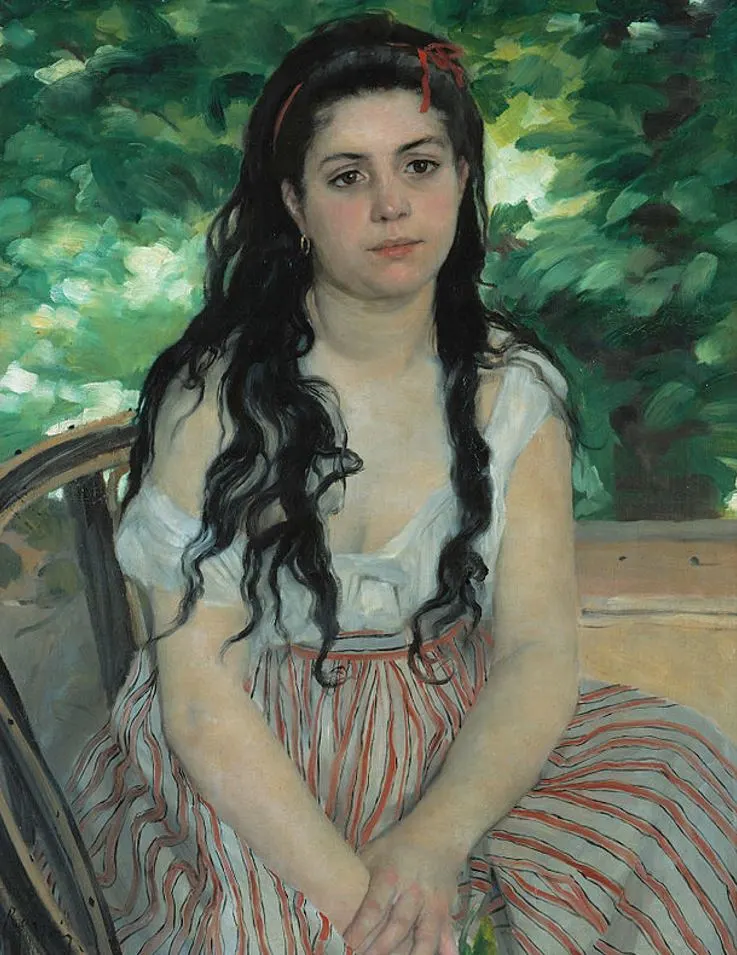
7. The Abbey in the Oakwood – Caspar David Friedrich
- Date created: 1809-1810
- Dimensions: 110 × 171 centimeters (43.3 × 67.3 inches)
The Abbey in the Oakwood is another painting in the collection of the Alte Nationalgalerie by Caspar David Friedrich, a German artist who is well-represented at the museum. It was painted around the same time as The Monk by the Sea and Friedrich requested the paintings to be hung next to each other.
Both works were exhibited at the exhibition of the Prussian Academy of Arts in 1810. Hanging the paintings together was a great move by the painter because both works were purchased by King Frederick Wilhelm III of Prussia for his collection.
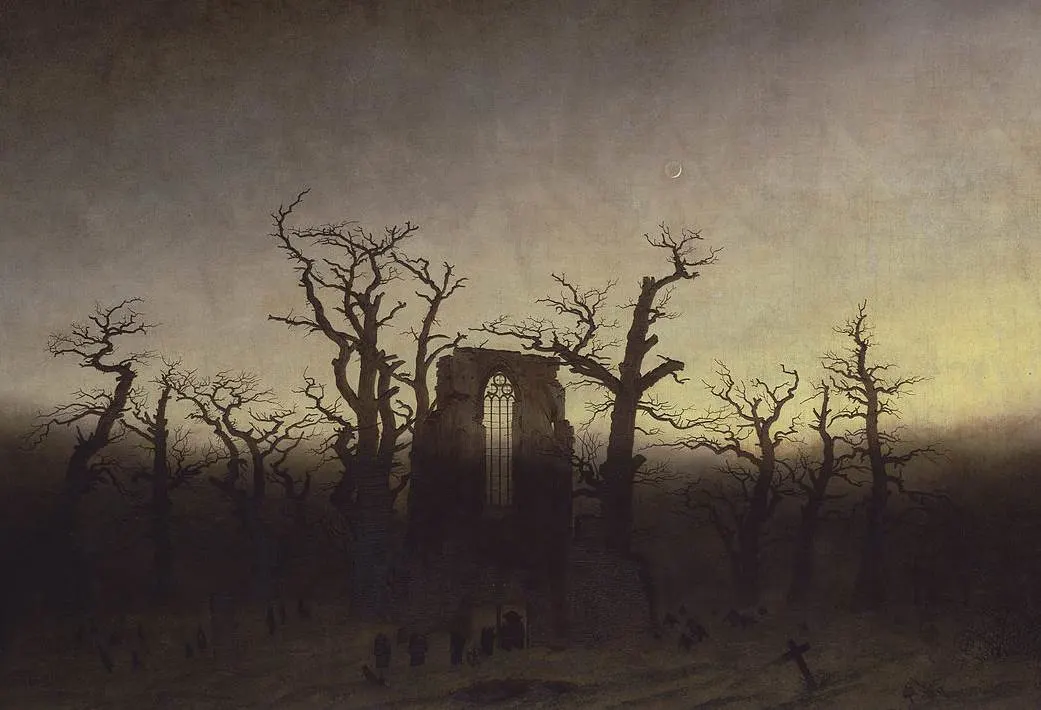
8. Fjord at Holmestrand – Johan Christian Dahl
- Date created: 1843
- Dimensions: 38 x 52.5 centimeters (14.9 x 20.6 inches)
Fjord at Holmestrand is the title of a beautiful painting by Johan Christian Dahl (1788-1857), a Norwegian painter and the leading Romantic artist in his home country. He is also considered to be the founder of the Golden Age of Painting in Norway.
This relatively small painting depicts the beautiful landscape in this town just south of the Norwegian capital of Oslo. Dahl’s oeuvre features some of the most beautiful landscape paintings in history and this work definitely fits into this category.
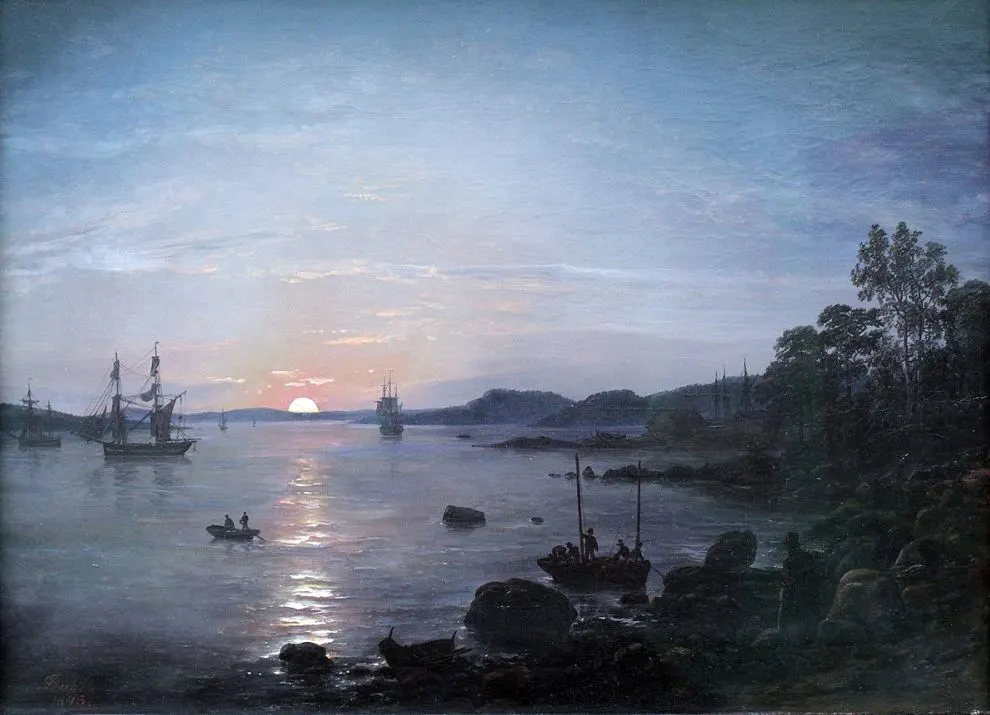
9. The Flute Concert – Adolph von Menzel
- Date created: 1852
- Dimensions: 142 × 205 centimeters (56 × 81 inches)
The Flute Concert is the common title of a painting known as “Frederick the Great Playing the Flute at Sanssouci.” As the full title of this work suggests, it depicts Frederick the Great, King of Prussia, who is playing the flute in his opulent Sanssoucci Palace in Potsdam near Berlin.
Menzel didn’t merely focus on Fredrick playing the flute but tried to create a unique atmosphere. He managed to do so by adding candlelight which highlights the decorative elements of the palace’s amazing Rococo interior. Most people in this painting were part of the King’s entourage and have been identified.
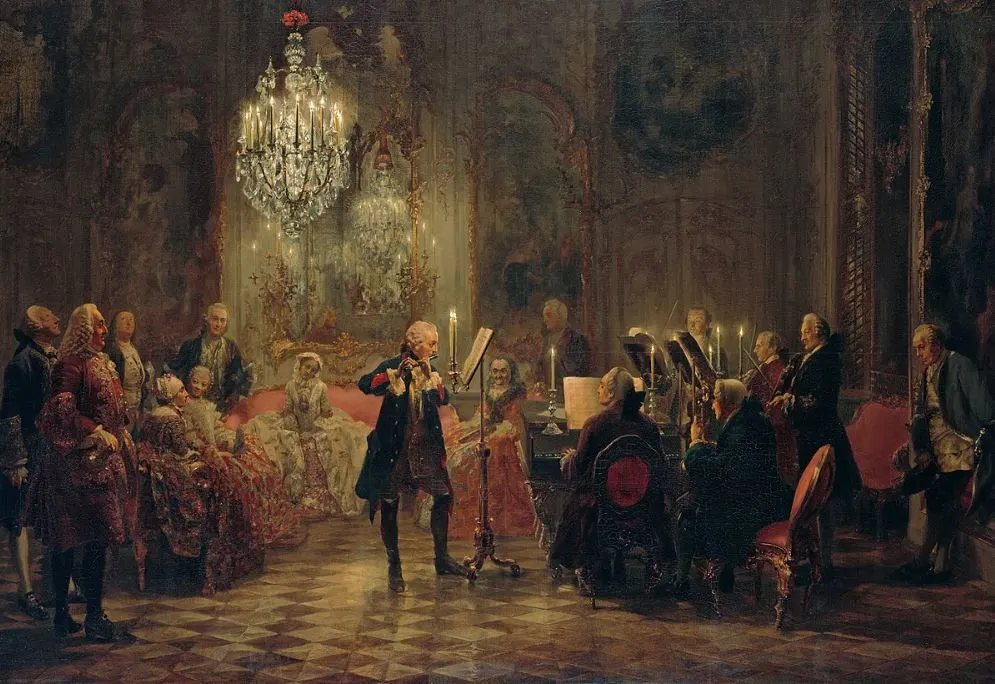
10. In the Troops’ Quarters outside Paris – Anton von Werner
- Date created: 1894
- Dimensions: 120 x 158 centimeters (47.2 x 62.2 inches)
In the Troops’ Quarters outside Paris is a fantastic Realism painting by the German artist Anton von Werner (1843-1915). It depicts a scene inside the Palace of Versailles during the Franco-Prussian War, a tragic event that took place 24 years earlier in 1870.
Anton von Werner was one of the most notable history painters in Germany and depicted many important military and political events in the Kingdom of Prussia. His paintings are almost photographic in nature, and this is very much reflected in this enthralling work of art.
